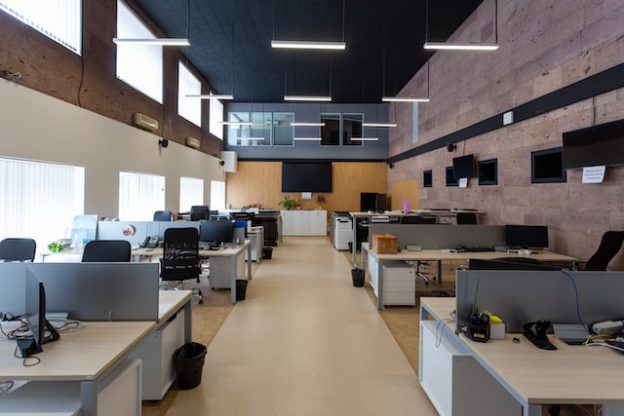Indoor air quality (IAQ) is incredibly important for your office occupants’ general comfort, health, and well-being. Unfortunately, most commercial building owners and employers overlook the importance of maintaining good indoor air quality. Unlike before, indoor environments are often more polluted than the outdoor environment.
Poor indoor air quality in an office setting can decrease employee productivity, increase sick days, and short or long-term health conditions. Employers should identify common office pollutants, monitor indoor air quality, and implement measures to improve IAQ. Below are four ways of improving indoor air quality.
1. Improve and Maintain Ventilation Systems Design
The office building’s HVAC system plays an important role in determining indoor air cleanliness. You should partner with building managers and other occupants in creating an effective plan for evaluating HVAC systems’ functionality and how to make it effective if air pollutants are becoming a concern.
You should hire HVAC professionals from Thomas & Galbraith to conduct regular inspections, maintenance, and repairs. That aside, you should check on office space arrangement and consider redesigning if necessary. The building’s ventilation system allows fresh air from the outside in. Ventilation systems shouldn’t be blocked to ensure that the fresh air supply is adequate. It should also filter out pollen, dust, and other air pollutants.
2. Monitor Moisture Levels
Moisture and humidity levels also affect indoor air quality. High moisture or humidity levels affect indoor air quality as they support the growth of biological contaminants, such as mold and mildew. On the other hand, low humidity levels affect employees by causing sinus problems, irritated throats, and dry eyes.
Consider using a humidifier or dehumidifier where applicable, depending on the office air quality needs. You should also monitor office appliances that can increase humidity levels, such as ventilation equipment and refrigerators.
3. Install Filtration Equipment
You should consider installing filtration equipment if the poor air quality in your office is primarily caused by chemical pollutants, viruses, and uncontainable gasses. A powerful purifier can:
- Remove or trap virus particles from indoor air using HEPA filters
- Trap harmful particulate matter from the air
- Kill mold and mildew
- Improve ventilation or upgrade HVAC air filtration
Fortunately, installing a specialized air filtration system is very easy. Most modern filtration systems use five filtration layers, which include a pre-filter or negative ionization, activated carbon filter, HEPA filter, photocatalytic UV-C, and absolute air and surface protection.
4. Redesign Office Space
Your office design can also contribute to poor indoor air quality. For instance, blocked HVAC vents will cause a strain on the unit and limit its effectiveness. Fresh, filtered air won’t be delivered into the workspace, so make sure all office vents are clear. Similarly, you should arrange the building for maximum air quality. For instance, heat sources or heat-generating equipment shouldn’t be placed below a thermostat. Office desks, chairs, and other barriers should be spaced enough and away from windows.
Endnote
Maintaining good indoor air quality is important as it determines employee productivity and overall well-being. While office redesign and HVAC system monitoring can improve IAQ, you should also implement specific occupant policies that promote good indoor air quality. Most indoor air pollutants come from office occupants. You should have strict policies that guide workspace cleanliness, such as restricting the use of specific perfumes or cologne and smoking.
Find the perfect office space through OfficeFinder. We have hundreds of Tenant Representatives that are always ready to help. Message us, our service is FREE.

